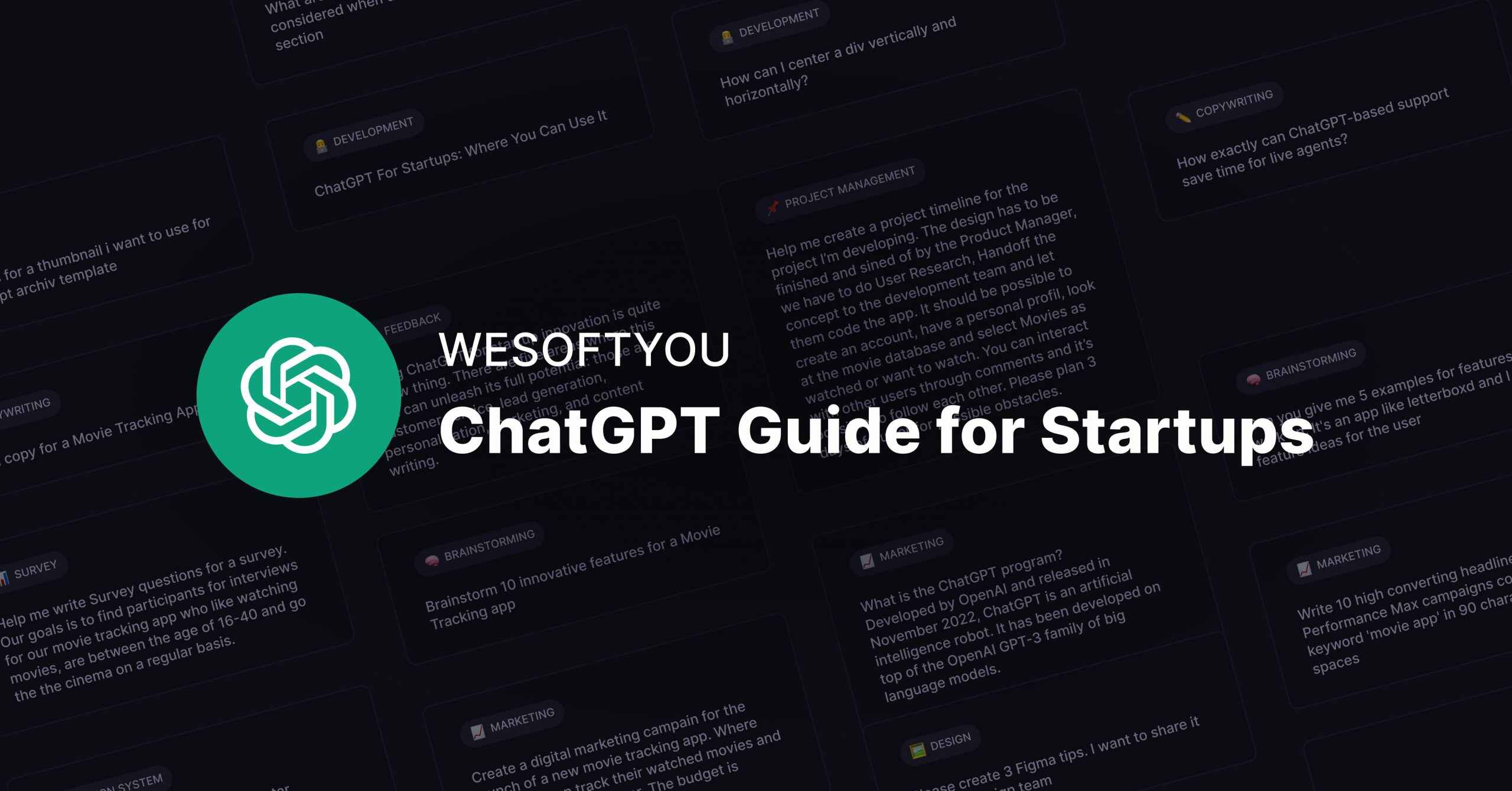Supply chains have always been the backbone of global business, but today, they’ve also become a company’s greatest vulnerability. From shipping delays to rising operational costs, even the smallest disruption can ripple across your entire business. That’s why more leaders are turning to custom supply chain management (SCM) software; not as a “nice to have,” but as the engine of resilience and growth.
The market is proving this shift. Analysts project SCM software will surge, driven by AI, automation, and real-time analytics. Yet for most executives, the real question isn’t why to build one; it’s how much it will cost.
At WeSoftYou, we’ve guided companies through this exact decision, helping them replace patchwork tools with systems that improve visibility, cut waste, and prepare them for whatever comes next. In this article, we’ll break down the costs of developing SCM software and share the lessons we’ve learned from building platforms designed to stand the test of time.
Why Supply Chain Management Software Matters in Business World
Not long ago, supply chain software was seen as a “nice to have”, a tool buried deep in operations. Today, it has become a boardroom topic. CEOs and CFOs recognize that supply chains are not just about moving goods; they’re about protecting revenue, customer trust, and market share. By digitizing and connecting every stage, supply chain management (SCM) software turns complexity into clarity. It cuts costs, increases agility, and builds resilience in an uncertain global market.
The numbers tell the same story: the global SCM software market was valued at USD 27.59 billion in 2024 and is projected to reach USD 30.73 billion in 2025. Behind this growth is a simple truth: companies that fail to modernize risk being left behind in a world where delays and disruptions make headlines.
What Is Supply Chain Management Software and How It Works
Think of SCM software as the command center of your business operations. It tracks shipments and orchestrates the entire flow of goods, money, and information. Procurement, logistics, warehousing, finance — all connected through one digital ecosystem. By serving as a single source of truth, it eliminates silos and enables teams to collaborate instead of firefight.
The payoff is transformative. With real-time visibility, companies can spot bottlenecks before they turn into crises, pivot production when demand shifts, and forecast with precision instead of guesswork. Automation reduces human error, data analytics sharpen decision-making, and leadership can move from reactive damage control to proactive growth strategies. In a fast-moving market, that shift isn’t just valuable — it’s survival.
Key Features of Supply Chain Management Software

A modern supply chain is too complex to be managed with spreadsheets or siloed tools. SCM software brings structure, intelligence, and speed to the entire network. Below are the core features that create measurable impact:
Inventory Management
Inventory is tied directly to cash flow and customer satisfaction. Advanced SCM systems use real-time tracking and predictive analytics to optimize stock levels, reduce excess, and prevent costly stockouts. This visibility helps businesses cut carrying costs and align procurement with actual demand patterns.
Order Management
Errors in order processing create ripple effects, like customer dissatisfaction and higher return costs. Order management features automate every step, from purchase to fulfillment, while tracking status in real time. This ensures faster turnaround, fewer errors, and stronger customer trust, even when order volumes scale dramatically.
Warehouse Management
Warehouses are often the hidden source of inefficiency. SCM software streamlines space utilization, picking, packing, and dispatch workflows. Features like barcode scanning, robotics integration, and optimized layout planning reduce handling times and increase throughput. The result: faster fulfillment and lower operating costs.
Transportation Management
Logistics accounts for a significant share of supply chain spend, and small inefficiencies compound quickly. Transportation management modules optimize route planning, consolidate shipments, and provide real-time delivery tracking. They also support carrier performance evaluation, enabling businesses to negotiate better contracts and cut freight costs without sacrificing service quality.
Supplier Management: Strengthening the Weakest Links
A supply chain is only as strong as its suppliers. SCM software enables businesses to monitor supplier reliability, assess risks, and ensure compliance with agreements. Beyond performance metrics, advanced platforms integrate supplier scorecards, automate communication, and even flag potential disruptions before they impact production.
Factors Influencing Supply Chain Management Software Cost
No two supply chains look alike, and neither should the software that powers them. The investment required to build or implement supply chain management (SCM) software depends on several interlocking factors. Understanding these drivers helps businesses plan budgets more accurately and avoid unexpected costs.
Complexity of the Solution
The broader and more complex the supply chain, the more advanced the software must be. A local distributor may only need core features like order and inventory management, while a global enterprise might require AI-driven demand forecasting, predictive analytics, and multi-currency/multi-region support. Features like machine learning, blockchain integration, or IoT-enabled tracking provide enormous value, but they also increase development time, specialized expertise needs, and overall costs.
Many executives underestimate this factor. Complexity isn’t just about “more features”; it’s about designing software that can scale and adapt without forcing a complete rebuild two years down the line.
Customization to Business Needs
Off-the-shelf SCM platforms rarely map perfectly to existing processes. Customization bridges this gap by aligning workflows, approval chains, and reporting to the realities of your business. The deeper the customization (whether it’s building unique dashboards for regional teams or automating compliance checks for specific industries) the higher the cost.
Nonetheless, companies often overspend on unnecessary customization. The smarter approach is to prioritize mission-critical workflows first, then phase in “nice-to-have” features over time, optimizing both cost and adoption.
Integration with Existing Systems
Most organizations already use ERP, CRM, or accounting platforms, so your SCM software can’t operate in a vacuum. Integrating with existing systems is vital to eliminate silos and enable end-to-end visibility. However, the effort depends on your current tech stack. Legacy systems or heavily customized ERPs can make integrations costly and time-intensive, while cloud-native solutions allow smoother, more affordable connections.
We always advise our clients to treat integration as an investment, not an expense. A system that doesn’t talk to your ERP or CRM will cost you more in inefficiency, workarounds, and missed opportunities than you “save” by skipping proper integration.
Breaking Down the Cost of Supply Chain Management Software
Executives rarely approve supply chain investments on features alone. The real question is: where does the money go, and why? Here’s how a typical SCM software budget breaks down across stages:
1. Planning & Analysis (10–15%)
This stage shapes the entire ROI case. It covers stakeholder workshops, business process mapping, and defining KPIs. Costs typically run $20K–$50K, depending on how many regions or divisions are involved.
Investing here prevents million-dollar overruns later. A $30K planning budget can save ten times that by avoiding misaligned features.
Design & Architecture (10–15%)
User interface design, workflow mapping, and technical architecture make up this phase. Expect $25K–$60K, with costs increasing when multi-language or multi-currency support is required.
Every hour spent on design is an hour saved in training and adoption. Well-architected systems also reduce scaling costs by 30–40% down the line.
3. Core Development & Integrations (40–50%)
The largest cost driver, covering module development (inventory, orders, warehouse, transport, supplier management) and system integrations (ERP, CRM, TMS, WMS). Budgets here typically range from $100K–$300K depending on scope and enterprise size.
Integration is the silent budget killer. Connecting to a legacy ERP can add six figures, but failing to integrate can cost millions in inefficiency.
4. Testing & Quality Assurance (15–20%)
QA ensures resilience under real-world pressure. Budgets typically run $40K–$80K, covering functional testing, performance stress tests, compliance validation (SOX, GDPR, ISO), and user acceptance testing.
Fixing a bug in testing costs $1, fixing it post-launch costs $5, and fixing it after customer adoption costs $50. QA isn’t optional — it’s insurance.
5. Deployment & Training (5–10%)
Rolling out the software, including data migration, cloud infrastructure setup, and end-user training, usually costs $15K–$40K. Complex, global rollouts can go higher.
Underfunded training equals underused software. Companies that invest properly here see adoption rates 40% higher within the first year.
6. Ongoing Maintenance & Continuous Improvement (15–20% annually)
Maintenance costs are recurring — $30K–$70K annually for a mid-tier SCM system. This covers patches, compliance updates, feature expansions, and system optimization.
Supply chains never sit still. Tariffs change, suppliers shift, and compliance laws tighten. Without proper maintenance funding, your “modern” SCM can be outdated within 18 months.
Supply Chain Management Software Development Costs Detailed Breakdown
When executives search for supply chain management software pricing, they’re rarely looking for a single number — they want clarity on what drives costs at each stage. The truth is, SCM software development costs are shaped by planning, design, integrations, testing, deployment, and ongoing maintenance.
Nonetheless, we’ve combined the table below to give a little bit more clarity:
| Phase | % of Total Budget | Basic SCM ($100K) | Mid-Tier SCM ($250K) | Enterprise SCM ($500K+) |
| Planning & Analysis | 10–15% | $10K–$15K | $25K–$35K | $50K–$75K |
| Design & Architecture | 10–15% | $10K–$15K | $25K–$40K | $50K–$75K |
| Core Development & Integrations | 40–50% | $40K–$50K | $100K–$125K | $200K–$250K+ |
| Testing & QA | 15–20% | $15K–$20K | $40K–$50K | $75K–$100K |
| Deployment & Training | 5–10% | $5K–$10K | $15K–$25K | $25K–$50K |
| Ongoing Maintenance (annual) | 15–20% of initial | $15K–$20K/year | $35K–$50K/year | $75K–$100K+/year |
Cost to Develop Supply Chain Management Software In-House vs Outsourced Team
One of the biggest financial decisions in building supply chain management (SCM) software is whether to invest in an in-house development team or outsource the work to a software partner. Both paths can deliver results, but the cost structures differ dramatically.
The Cost of In-House Development
An in-house team gives you direct oversight and daily collaboration, but it comes at a premium. Beyond salaries, businesses must factor in recruitment, benefits, office space, software licenses, and ongoing training. For a small-to-mid project, annual costs for even a lean team of 5–7 developers can easily exceed $500K–$700K. Add to this the challenge of retaining top talent in competitive markets like New York or London, and in-house becomes a high-fixed-cost strategy.
The Cost of Outsourcing Development
Outsourcing shifts the model from fixed overhead to flexible investment. By working with a development partner like WeSoftYou, businesses avoid recruitment costs, long-term commitments, and infrastructure expenses. Offshore or nearshore teams can cut development costs by 40–60%, with access to the same caliber of expertise at lower hourly rates. For example, a project that might cost $300K in-house could be delivered for $120K–$180K with outsourcing, while also reducing time-to-market thanks to specialized teams and proven frameworks.
Ongoing Costs of Supply Chain Management Software
Launching supply chain management (SCM) software is only the first step. The true financial commitment lies in its ongoing upkeep — ensuring the system remains secure, scalable, and aligned with evolving business needs. Ignoring these costs often turns what should be a strategic asset into an expensive bottleneck.
Maintenance and Updates
Expect to allocate 15–20% of your initial investment annually for maintenance. This covers bug fixes, performance improvements, and regular security patches. For enterprise-grade systems, that can easily reach $30K–$70K per year. Updates also introduce new features, but implementing them may require brief downtime and retraining, which adds indirect costs.
Training and Support
Even the best SCM platform delivers little ROI if employees don’t use it effectively. Training sessions, onboarding new hires, and ongoing support typically account for 5–10% of annual ownership costs. Larger organizations often invest in dedicated internal support teams or external consultants to ensure smooth adoption.
Infrastructure and Hosting
Custom SCM software usually runs on cloud platforms like AWS, Azure, or GCP. Hosting, storage, bandwidth, and scaling services create recurring costs. For mid-sized businesses, these run from $2K–$10K per month, while global deployments may cost far more depending on transaction volumes and data storage needs.
Infrastructure scales with your business, but if not optimized, it can also scale your costs. Careful architecture design keeps growth affordable.
Estimated Ongoing Costs of Custom SCM Software
The maintenance expenses will vary depending on company size and complexity, so we’ve broken them down into tiers to give you a concrete view of what to expect.
| Cost Category | Basic Setup (Small Business) | Mid-Tier (Growing Company) | Enterprise (Global Operations) |
| Annual Maintenance & Updates | $20K – $40K | $50K – $100K | $150K – $300K+ |
| Training & User Support | $5K – $10K | $15K – $30K | $50K – $100K+ |
| Infrastructure & Hosting | $1K – $3K / month | $5K – $10K / month | $20K – $50K+ / month |
| Total Annual Ongoing Costs | ~$40K – $70K | ~$90K – $160K | $300K – $600K+ |
Hidden Costs to Watch Out For in SCM Software
When organizations budget for supply chain management software, they often account for development, integrations, and maintenance. But what can derail projects are the overlooked costs, the ones that don’t show up in initial estimates yet have real financial impact over time.
1. Data Migration and Cleansing
Moving data from legacy systems into a new SCM platform isn’t plug-and-play. Outdated records, duplicates, and inconsistent formats often require extensive cleanup before migration. Underestimating this step can lead to delays, extra consulting fees, and poor system performance.
2. Change Management and Training
Even the best system falls flat if users resist adoption. Beyond the initial training, companies may need workshops, refresher sessions, or role-specific onboarding programs. These costs can quietly escalate but are essential for ROI.
3. Performance Scaling
As order volumes grow, infrastructure demands (servers, storage, APIs) increase. Without planning for scaling, businesses can face surprise costs in upgrading their hosting environment or expanding cloud usage.
4. Regulatory Compliance Upgrades
Compliance isn’t a one-time checkbox. As regulations evolve (GDPR, HIPAA, customs regulations), additional features or monitoring tools may be required. Ignoring this creates hidden technical debt — or worse, penalties.
5. Integration Maintenance
Integrating with ERP, CRM, or third-party logistics partners is complex. But the hidden cost isn’t the setup — it’s the upkeep. APIs change, vendors update their platforms, and maintaining these connections takes continuous effort.
6. Opportunity Costs
Delays in implementation or poor adoption can stall business initiatives, leading to lost revenue opportunities. While harder to quantify, this “invisible” cost can outweigh any line item in the budget.
For our clients, we help anticipate and minimize hidden costs early, by auditing existing systems, planning migration strategies, and building flexible infrastructures that won’t surprise you down the road.
Cost-Saving Tips for Developing Supply Chain Management Software
Building supply chain management (SCM) software is a strategic investment, but the right approach can help reduce costs while maximizing ROI. From our experience at WeSoftYou, the difference between an over-budget project and a cost-effective one lies in early planning and smart prioritization.
Focus on Core Features First
Not every feature needs to launch on day one. Start with functionality that drives measurable business outcomes: inventory management, order tracking, demand forecasting. Add advanced analytics, AI, or blockchain modules later, once the core system proves value. This phased approach prevents scope creep and keeps budgets predictable.
Choose a Partner With Domain Expertise
An experienced SCM software development company saves you more than developer hours — it saves you rework. We’ve seen projects where businesses spent thousands undoing poor architecture decisions. With a team that already understands supply chain workflows, compliance, and integrations, you reduce onboarding costs and accelerate delivery.
Design for Scalability From the Start
The cheapest system is one you don’t have to rebuild in two years. Modular design and API-first architecture allow your SCM software to scale with new products, partners, or global expansions — without paying for expensive retrofits. It’s a classic case of spending wisely upfront to avoid costly redevelopment later.
Why Trust WeSoftYou With Your SCM Software Development
We know that cost efficiency comes from building smarter. With 150+ top-tier engineers, we’ve delivered complex enterprise platforms in logistics, fintech, and e-commerce that continue to scale without hidden costs.
What sets us apart is our domain expertise in supply chain processes. We’ve built systems that:
- Handle global multi-warehouse inventory with real-time visibility.
- Integrate seamlessly with ERP, CRM, and financial platforms.
- Embed compliance and audit trails into the software architecture, saving clients from costly fines.
- Use AI/ML forecasting to reduce overstocking and cut transportation expenses.
Our clients consistently highlight two things: our transparent cost estimates (backed by our 100% estimate match guarantee) and our ability to translate business challenges into scalable, cost-effective software solutions.
If you’re exploring SCM software, don’t just ask “what’s the price?” — ask how the investment will shape your business in 5 years. That’s the perspective WeSoftYou brings to every project. Let’s talk about building a solution that grows with you.
Conclusion: The Cost of Building SCM Software
Investing in supply chain management software, you build the backbone of tomorrow’s operations. On average, development costs range from $50,000 for a streamlined solution to $500,000+ for enterprise-grade platforms with AI, advanced analytics, and multi-system integrations.
The real question isn’t “how much does it cost?” but “how much value does it create?” Companies that commit to the right solution see gains in efficiency, resilience, and decision-making that outweigh the initial spend. At WeSoftYou, we approach every SCM project with that perspective, helping you turn cost into long-term competitive advantage.
Ready to explore what SCM software could look like for your business? Let’s talk about your goals, challenges, and budget.
FAQ
How long does it take to develop a supply chain management software?
The development timeline depends on the complexity of your supply chain and the features you require. A basic SCM solution can take around 4–6 months, while mid-tier platforms with integrations often require 6–9 months. Large-scale enterprise systems with advanced analytics, AI, and global workflows may extend to 12 months or more. At WeSoftYou, we use agile delivery to release functional modules iteratively, so your team starts seeing value early — without waiting for the full build.
Can the supply chain management software be integrated with existing ERP or CRM systems?
Yes. Integration is often the biggest cost and success factor in SCM projects. Modern APIs allow your SCM platform to connect with ERP (like SAP, Oracle, NetSuite) and CRM systems (like Salesforce, HubSpot), ensuring seamless data flow across finance, sales, procurement, and logistics. Our team has delivered projects where real-time ERP–SCM integration cut manual reconciliation costs by up to 40%, so you’re not just adding another tool but building one connected ecosystem.
What ongoing support and maintenance services do you offer?
Post-launch, WeSoftYou provides comprehensive support covering bug fixes, security patches, performance tuning, and new feature development. We also offer monitoring and proactive updates to ensure compliance with evolving regulations and smooth scalability as your operations grow. Ongoing costs typically range from 15–20% of the initial development budget annually, but this investment secures system reliability, protects sensitive supply chain data, and keeps your software future-ready.
How secure is the supply chain management software developed by WeSoftYou?
Security is built into every layer of our SCM solutions. We apply bank-level encryption (both in transit and at rest), role-based access control, and multi-factor authentication to protect sensitive data. Regular security audits, penetration testing, and compliance alignment with standards like GDPR, SOC 2, or ISO 27001 are part of our process. For businesses in highly regulated industries, we can design compliance-first architectures that minimize risk exposure and safeguard reputation.
Do cloud-based SCM solutions cost less than on-premise ones?
Yes. Cloud-based SCM software usually has lower upfront costs since you don’t need to invest in servers or in-house infrastructure. On-premise solutions, however, may require a larger initial investment for hardware and setup, but they can reduce recurring hosting costs in the long term. The right choice depends on your scale, compliance needs, and growth plans.
How do user licenses or seats impact the overall supply chain management software price?
Even with custom-built solutions, the number of users affects cost because it impacts infrastructure, security layers, and support requirements. A system designed for 20 users will be less resource-intensive (and less costly) than one serving 2,000 concurrent users with advanced access roles and global availability.
Can SCM software be developed in phases to spread out costs?
Absolutely. Many companies choose to start with an MVP (Minimum Viable Product) focusing on critical modules (e.g., inventory and order management). Additional features like predictive analytics, AI-driven forecasting, or multi-location support can be added later. This phased approach helps manage budget while still delivering business value early.





















